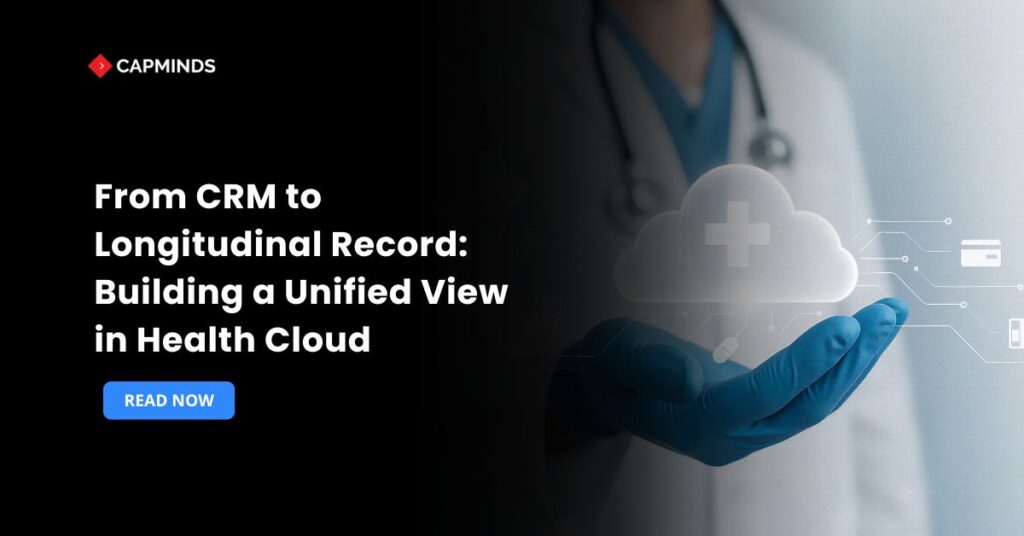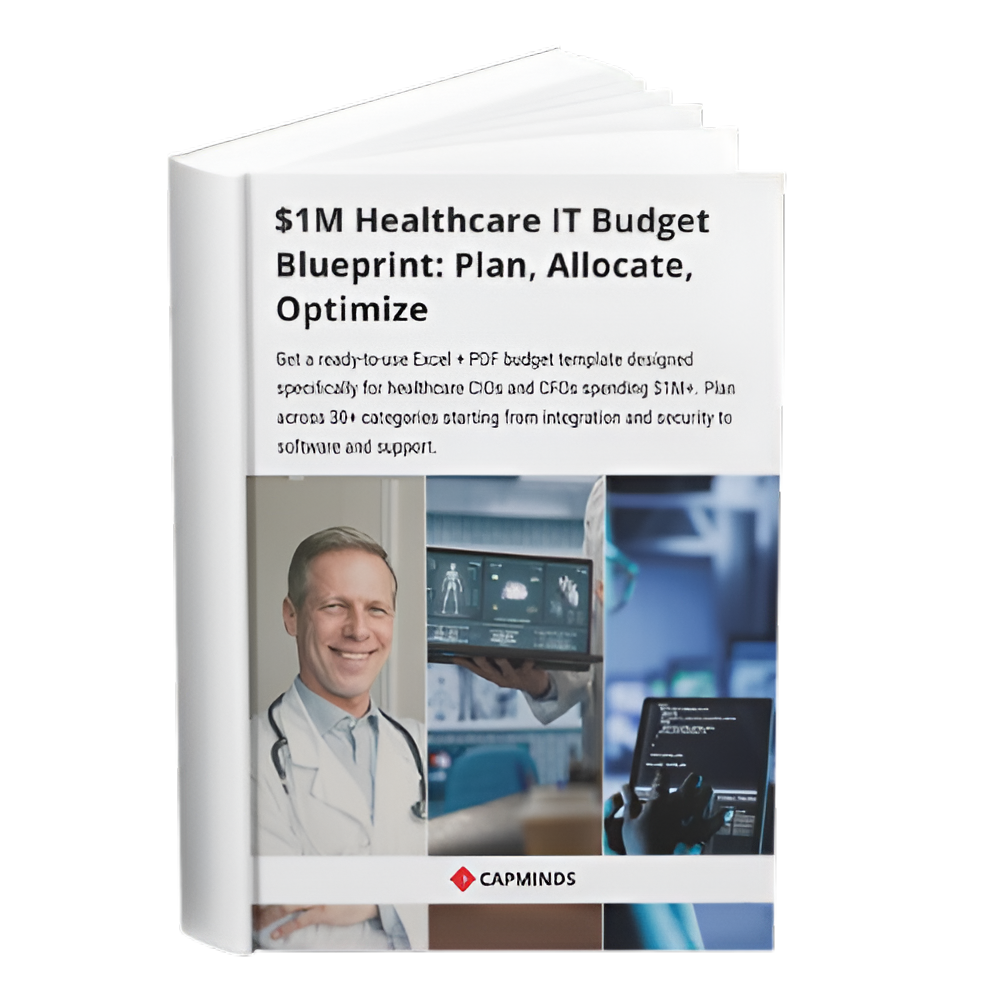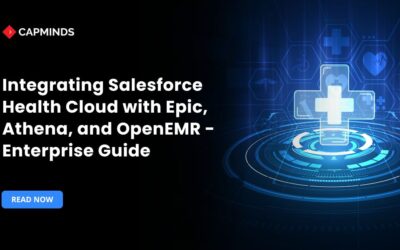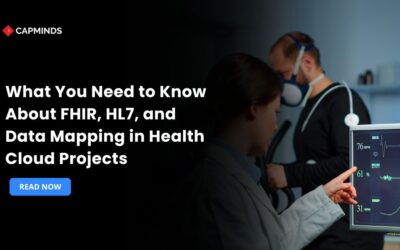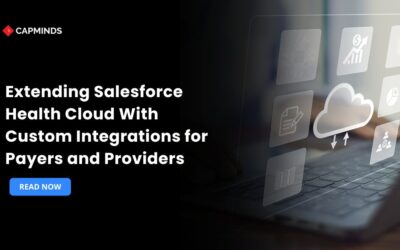From CRM to Longitudinal Record: Building a Unified View in Health Cloud
Large volumes of patient data are generated by healthcare companies today across various systems, including clinical notes, remote monitoring, billing, and appointment scheduling. Care professionals struggle to obtain a comprehensive picture of each person’s health journey when data is stored in silos.
Salesforce Health Cloud provides a single patient perspective that promotes improved results and more efficient operations, allowing a transition from conventional CRM-driven interactions toward a real longitudinal patient record in Health Cloud.
In this blog, you’ll learn how to turn your healthcare CRM integration into a complete, interoperable platform for long-term medical data records. You’ll know the difficulties posed by fragmented data, highlight important design ideas, and offer implementation strategies.
The Problem of Disjointed Patient Information
The delivery of healthcare is fundamentally complicated. Patients communicate with telehealth platforms, pharmacies, labs, specialists, and primary care doctors. However, each contact usually creates data in a different system. Thus, care teams frequently deal with:
- Inconsistent or duplicate records
- Access to vital healthcare data is delayed
- Workflow-slowing manual reconciliation attempts
Care coordination is complicated by these silos. By implementing Salesforce Health Cloud implementation services and standardizing workflows, healthcare organizations can consolidate fragmented CRM data into a unified platform, improving both clinical and administrative efficiency.
Removing these obstacles entails switching to a longitudinal health record. You can guarantee that all authorized stakeholders receive the most recent information instantaneously by automating data flows into a single platform instead of manually reconciling disparate bits.
Why do you need Salesforce Health Cloud?
Salesforce Health Cloud adds healthcare-specific features to the well-known Customer 360 CRM. As a result, businesses have a recognizable interface and have access to:
- Demographics, care plans, and connections with the care team are all included in patient profiles.
- Clinical Data Model with FHIR and HL7 connection optimized
- Health timelines, care plans, and suggestions for the best course of action are examples of care collaboration tools.
The connectivity services offered by Health Cloud then make it easier to integrate healthcare CRMs by supporting both standards.
APIs (FHIR, HL7) and customized connections. This versatility enables you to:
- Import lab findings, imaging reports, and device data in real time.
- Connect EHR systems and third-party apps using MuleSoft or native REST APIs.
- Sync billing and claims data across revenue cycle management platforms.
Using these capabilities, you may consolidate data from scheduling systems, EHRs, remote monitoring devices, and patient portals, laying the groundwork for a complete, unified patient picture.
Designing a Longitudinal Patient Records
When creating a longitudinal patient record in Health Cloud, rigorous healthcare CRM integration and FHIR & HL7 connectivity are essential. Adopting these standards ensures that patient data is accurate, interoperable, and compliant across multiple systems.
1. Adopt a Standard Data Model
- Using FHIR resources, map external data to the Clinical Data Architecture of the Health Cloud.
- Normalize codes such as LOINC or SNOMED to maintain uniformity between sources.
2. Define Data Ownership
- Assign distinct roles in data quality, updates, and error remediation.
- Implement governance measures for patient consent and data sharing.
3. Implement Incremental Data Flows
- Use event-driven triggers to update records when new data is received.
- Set up batch procedures for high-volume imports, such as historical records.
4. Maintain Audit Trails and Versioning
- Track who made changes and when, ensuring compliance with HIPAA and GDPR.
- Preserve previous versions for legal, clinical, and research use cases.
Real-time, accurate, and compliant longitudinal health records will be made possible if you base your design on these guidelines.
Enabling Health Data Interoperability
Interoperability is still a major goal for healthcare professionals, and with good reason. When data interchange fails, organizations face increased expenses and poorer patient results.
- Reduced Administrative Burden – Automation reduces the need for human data entry and reconciliation.
- Improved Care Coordination – Providers may view a consistent chronology of interventions, labs, and comments.
- Improved Population Health Analytics – Aggregated data enables risk categorization and quality reporting.
To do this, consider:
- FHIR-Based APIs – Send and receive clinical data using Salesforce Health Cloud’s native FHIR endpoints.
- HL7 V2 Integration – To convert earlier HL7 streams to FHIR or JSON for Health Cloud ingestion, use Mirth Connect or MuleSoft.
- SMART on FHIR Apps – Integrate specialized applications directly into the Health Cloud patient timeline to provide smooth processes.
Using these methods, you’ll achieve genuine health data interoperability and realize the full potential of Salesforce Health Cloud.
Implementation Roadmap
Putting things together takes an organized method. The following is a high-level implementation plan for creating your unified view.
1. Discovery and Assessment
- Inventory all current systems such as EHR, billing, laboratories, and devices.
- Assess data quality, format, and integration capabilities.
2. Data Model and Architecture Design
- Define FHIR profiles and custom objects in Health Cloud.
- Plan the integration patterns like real-time vs batch.
3. Integration, Development, and Testing
- Create integrations using MuleSoft or native Health Cloud APIs.
- Perform end-to-end testing using sample patient data.
4. User Training and Change Management
- Teach care teams about new patient profiles, care timelines, and dashboards.
- Provide documentation and prompt help.
5. Go-Live and Continuous Improvement
- Monitor integration performance and data accuracy.
- Get user input and iterate on workflows.
This staged strategy reduces risk while ensuring a seamless and long-term transfer from CRM to a longitudinal record.
Business Advantages of a Unified Patient View
Finally, creating a real longitudinal record in Health Cloud yields significant commercial value:
- Higher Patient Engagement – Patients may get complete health summaries through patient portals, which increases satisfaction and adherence.
- Reduced Readmissions – Care teams can detect risk factors early by evaluating all longitudinal data.
- Optimized Revenue Cycle – When claims are based on a single source of truth, billing mistakes diminish.
- Data-Driven Insights – Financial, operational, and clinical information are combined in dashboards and reports used by leaders.
Furthermore, as rules require greater data liquidity and value-based care, having a single patient picture positions your organization for competitiveness, both clinically and financially.
Unlock Your Unified Patient View with CapMinds Services
At CapMinds, we transform fragmented healthcare data into a seamless, longitudinal patient record that empowers care teams and drives better outcomes.
With our end-to-end expertise, you’ll move from siloed CRM interactions to a truly unified patient view, all within Salesforce Health Cloud.
- Healthcare CRM Integration – We connect scheduling systems, EHRs, billing platforms, and remote-monitoring devices into a single data hub.
- FHIR & HL7 Connectivity – Our specialist team builds robust, standards-based interfaces, real-time APIs, or batch imports, ensuring interoperability across your entire ecosystem.
- Data Modeling & Governance – We design and enforce clinical data architectures, normalize codes (LOINC, SNOMED), and establish stewardship policies to maintain accuracy and compliance.
- Change Management & Training – We deliver hands-on training, documentation, and support to guarantee rapid adoption and ongoing improvement.
By partnering with CapMinds Services, you’ll achieve real-time insights, reduced administrative burden, and a 360° patient picture that enhances engagement, optimizes revenue cycle performance, and supports value-based care initiatives.
Let us help you build the foundation for truly patient-centric healthcare, starting today.
